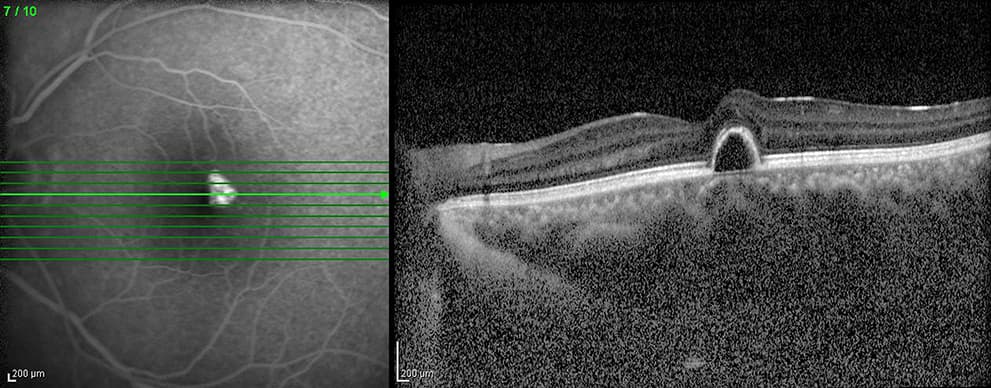Macular Pucker
With age, mobilization and migration of cells found within the retina may spread outward along the surface of the central retina forming a macular scar. This thin layer of scar tissue is known as a macular pucker. Macular pucker is known by a variety of names, including epiretinal membrane, surface wrinkling retinopathy, cellophane retinopathy, and internal limiting membrane disease. All of these names relate to the fact that there is a layer of thin scar tissue on the surface of the macula which results in mechanical wrinkling and distortion of the retina. Since the scar cells are attached to the retina, the retina itself becomes wrinkled in association with the progression of the scar. When this occurs in the central, critical portion of vision, the macula, visual symptoms may result.

The symptoms of a macular pucker include: distortion in lines or letters while reading, a decrease in central vision for distance and reading activities, and blurring or distortion of images when looking at television or in the theater. In most cases, no treatment is recommended for macular pucker. In some instances, however, consideration for surgical repair may be entertained. Repair of a macular pucker or epiretinal membrane is accomplished through the use of a vitrectomy, the microscopic removal of vitreous gel from the center of the eye. Particular attention is paid to removing any vitreous attachment to the central macular region.

